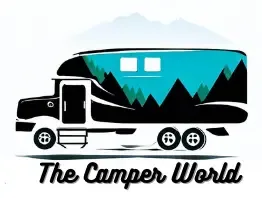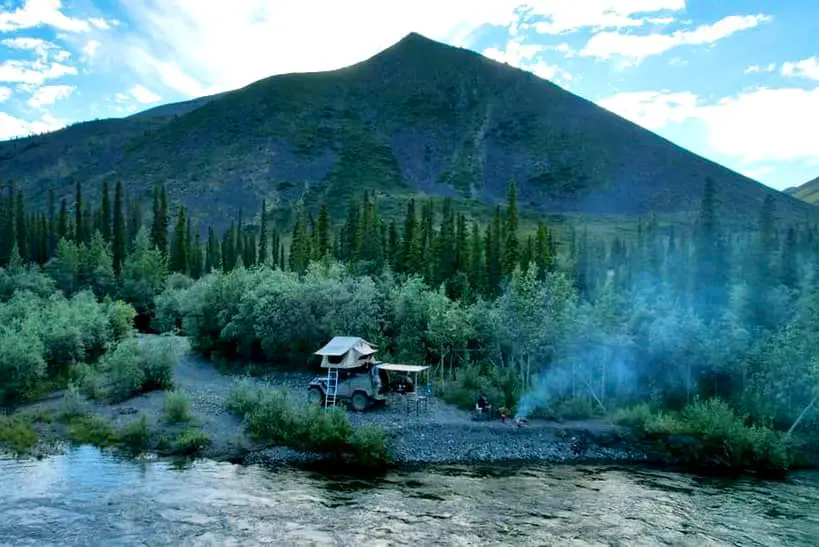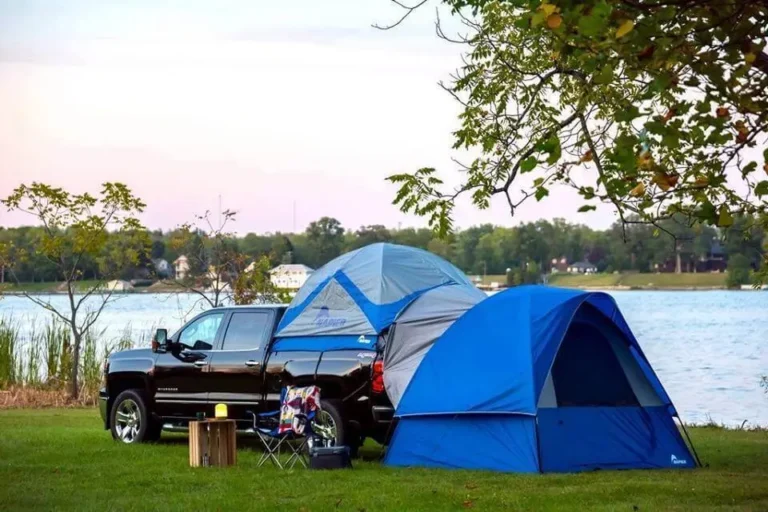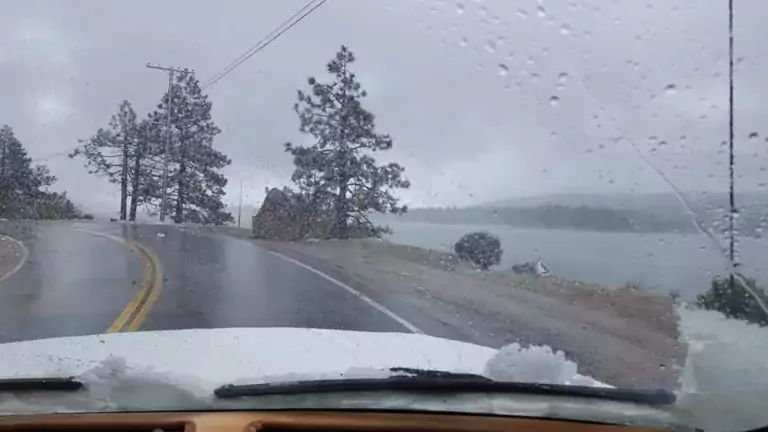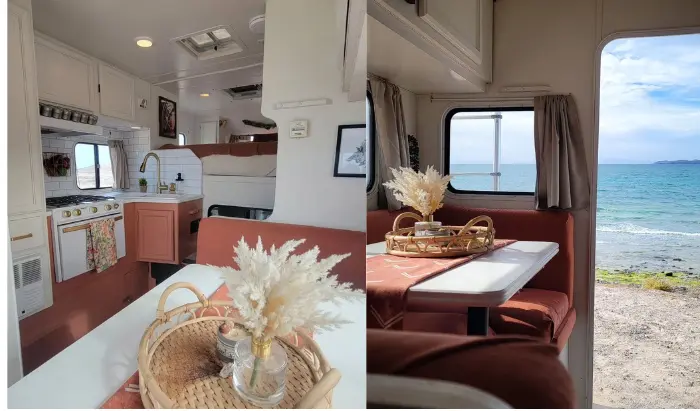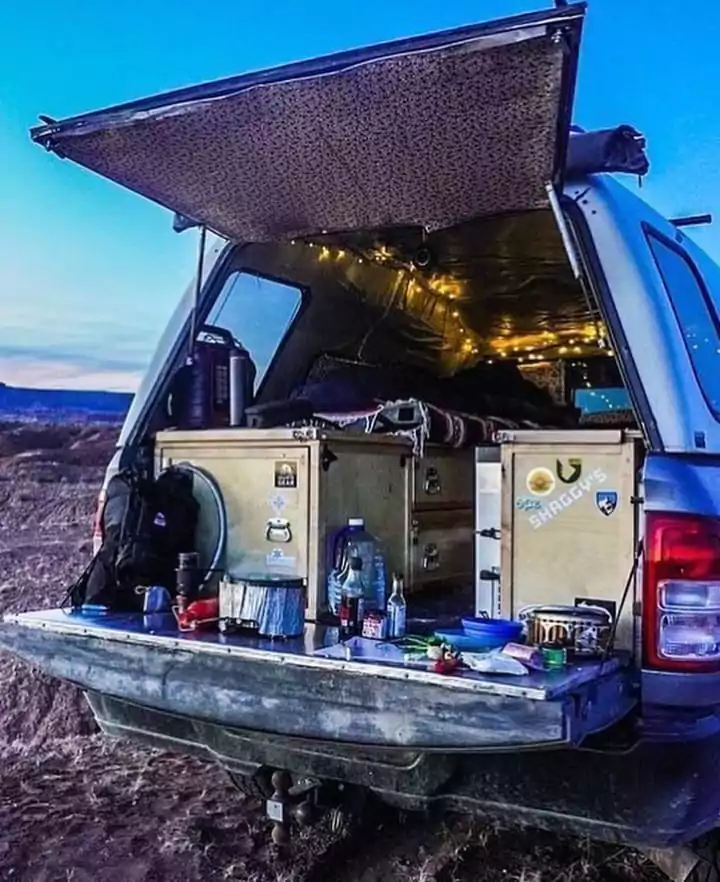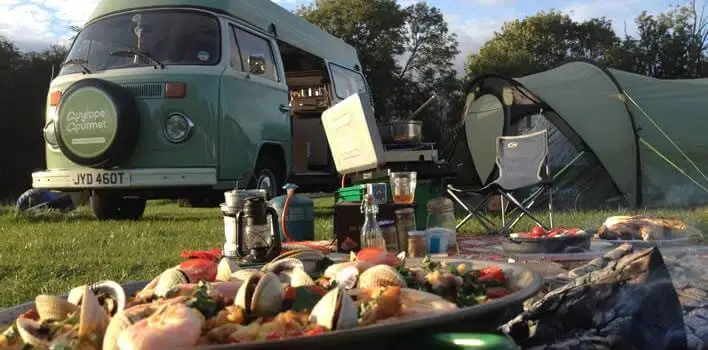Ultimate Guide To Free Camping
Free Camping is a truly wonderful way to experience and connect with the beauty of nature. Unlike traditional camping, it offers a sense of freedom and flexibility that allows you to choose your own campsite and explore the wilderness on your own terms. Its a chance to disconnect from the stresses of modern life and immerse yourself in the simplicity and beauty of nature.
Of course, free camping requires a greater degree of self-sufficiency and responsibility, but for those who are willing to put in the effort, the rewards are immeasurable. So, if you’re seeking an adventure that’s truly unforgettable, give free camping a try and experience the magic of the great outdoors.
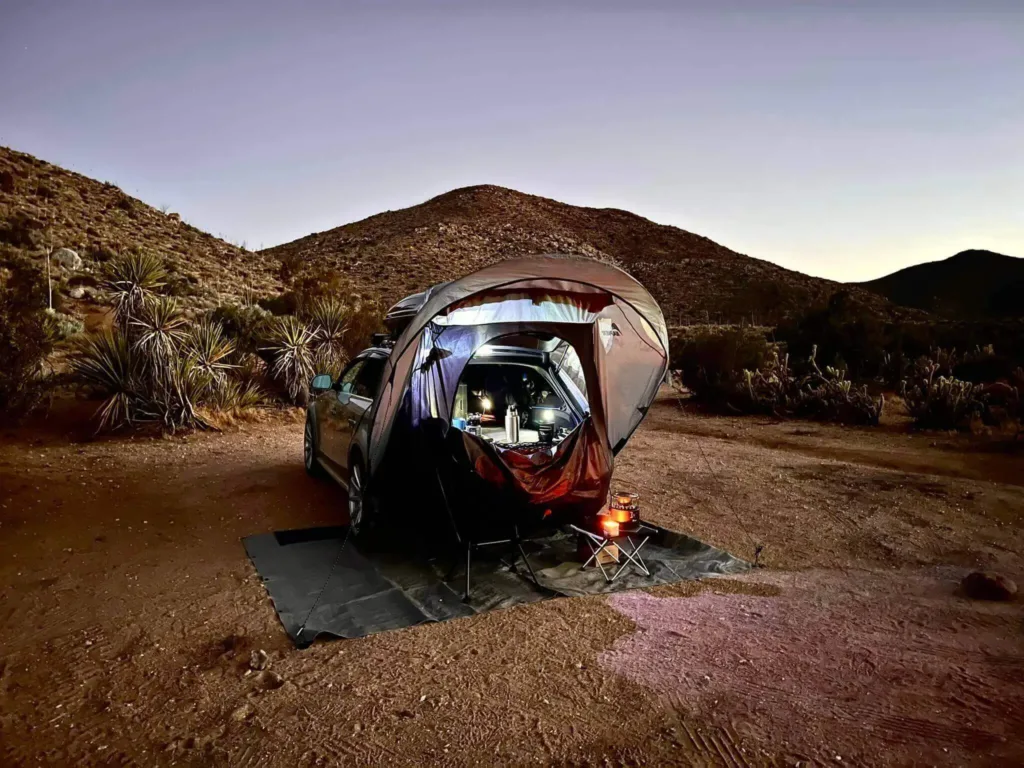
What is “Free Camping”?
Free camping, also known as dispersed camping or wild camping is a type of camping where you can camp in natural settings on public land without any fees or reservations. It requires self sufficiency and offers a sense of adventure, freedom, and connection to nature.
Common Names For “Free Camping”
There are several names used for free camping that are interchangeable. Some of the commonly used names are,
- Boondocking
- Primitive Camping
- Dispersed camping
- Wild Camping
- Stealth Camping
- Dry Camping
Types Of Free Camping:
There are several types of free camping, each with its unique characteristics and benefits. Here are some of the most common types.
- Dispersed Camping: This type of camping involves setting up your tent or RV in underdeveloped areas of public land. Its typically allowed in national forests, Bureau Of Land management lands, and other public lands, and often requires a permit or registration.
- Stealth Camping : This involves camping in urban or sub-urban areas, often in parking lots, or other inconspicuous locations. It’s a way to camp for free while travelling or exploring cities or towns.
- Roadside Camping : It involves pulling off the road and camping in a safe and legal spot alongside the road. Its a convenient way to rest during a long trip or to explore the scenic areas.
- Beach Camping: Some beaches allow free camping in designated areas often with limited amenities. Its a great way to experience the beauty of the ocean and beach environment, without the expense of traditional camp ground.
- Backcountry Camping: This type of camping involves, backpacking into wilderness areas and setting up camps where its safe and legal to experience remote and pristine natural environments avoiding crowd.
Tips For Dispersed Camping:
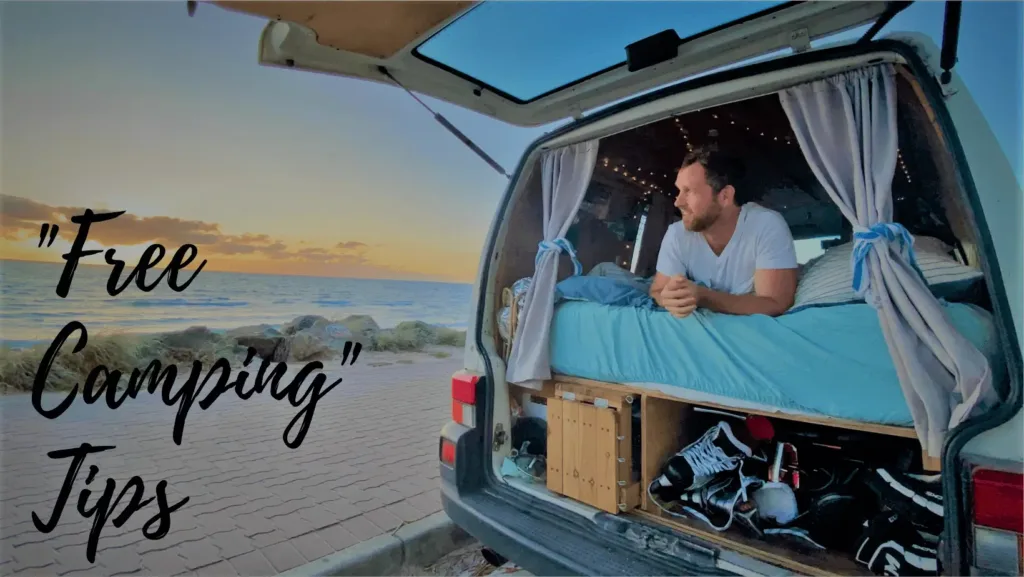
- Know the rules and regulations: Before you head out, research the rules and regulations for dispersed camping in the area you plan to camp in. Some areas may have restrictions on campfires, camping locations, or permits required.
- Choose your campsite carefully: Look for a flat, level spot to pitch your tent or park your vehicle. Try to avoid fragile ecosystems such as wetlands or areas with sensitive vegetation.
- Pack in and pack out: Unlike established campsites, there may not be trash or recycling facilities available. Make sure to pack out all your trash and leave no trace of your presence.
- Be prepared: Dispersed camping means you may not have access to amenities such as running water, toilets, or firewood. Make sure to bring plenty of water, a portable toilet, and enough firewood for your stay.
- Respect wildlife: Dispersed camping often means sharing the area with wildlife. Keep food stored in bear-resistant containers or hung from a tree to prevent attracting animals to your campsite.
- Be self-sufficient: Since dispersed camping means you’re off the grid, you should be prepared to be self-sufficient. Bring a map and compass or GPS, extra food and water, and first-aid supplies.
- Follow fire safety precautions: When starting a fire, make sure it’s in a designated fire ring or fire pan. Clear the area of debris and keep a bucket of water nearby in case of an emergency.
- Respect other campers: Dispersed camping means you may be in close proximity to other campers. Keep noise levels down and be respectful of others’ privacy.
By following these tips, you can enjoy a safe and enjoyable dispersed camping experience while minimizing your impact on the environment.
Where To Camp Free In US?
If you are looking for free legal camping options in US, public lands managed by Bureau Of Land Management(BLM) and US Forest Service (USFS) are the best bet. You can also find free campsites on state forest land, certain state parks, national recreation areas, and city parks. Always check the rules and regulations before camping and follow posted signs.
Bureau Of Land Management (BLM):
Bureau Of land Management-managed lands offers a range of camping opportunities, from developed campgrounds with various amenities to dispersed camping in the backcountry. Most of the developed campgrounds may require a fee.
Dispersed Camping is generally allowed on most public lands for a period not exceeding 14 days within a 28 consecutive day period. Campers must not leave any personal property unattended for 10 days (12 months in Alaska).
Dispersed campsites are located along most secondary roads and may not be marked. Popular locations can be recognized by a telltale flat distributed area that has been used as a camp site before. Do check with their official website for “where to camp?” and their interactive maps for full guidance.
States have additional requirements and restrictions for dispersed camping which should be checked with the local office before heading out.
U.S. Forest Service Land (USFS):
USFS manages 175 national forests and grasslands in United States. Free camping is allowed on most of the national forest lands except in highly developed areas. Before heading out, check out regulations and signs in the areas to ensure that the free camping is permitted.
Make sure to follow Leave No Trace principle, pack out everything you bring in, and check for fire restrictions. Additionally be aware, that camping is permitted only for 14-days within any continuous 30-day period at any location within the same 20-miles radius. Check weather and road closures, and verify that you are on National Forests lands by checking maps.
National Wildlife Refugees (NWR):
Many National Wildlife Refugees have a designated camping areas, that are either free or of very low cost. These are managed by US Fish and Wildlife service.
Finding a wildlife refuge that allows camping can be challenging since there is no comprehensive list available. However, you can locate a suitable refuge by visiting the U.S. Fish and Wildlife Service website and checking the visitor activities section for each wildlife refuge in your desired state. This process may involve scanning through each refuge individually to determine if camping is allowed.
It’s worth noting that some camping areas may offer basic facilities like fire rings, picnic tables, toilets, and RV hookups, while others may be more primitive. Additionally, some wildlife refuges may charge fees for camping, while others do not.
U.S. Army Corps Of Engineers :
The Army Corps of Engineers (ACOE) manages public land for recreational activities, including camping. However, they require you to camp only in areas that they have designated for camping. Most of these areas are developed campgrounds with numbered spaces, and they do not allow camping anywhere you want.
The ACOE website lists all the recreation areas and camping areas they have designated. Some campgrounds are free, but some charge fees. They also offer boondocking opportunities in some areas, but you still need to remain in areas designated for camping. To find boondocking areas on ACOE land, you need to check the ACOE website and look for camping areas without fees that have the ACOE symbol.
However, there is no way to identify which of these areas support boondocking, so you need to check the campground on Google Maps Satellite to see if you can identify marked campsites or not.
The district commander in charge of the area may modify these rules, so always check with the specific ACOE office for rules, regulations, and availability before planning a camping trip.
The National Parks :
Many state parks offers free camping, especially during certain times of the year, or for specific groups, such as military personnel or seniors. Check with National Park Service website for detailed camping options best suitable for you.
Private Lands:
In some cases the private landowners may allow free camping on their private lands. But you always need to take permission before setting up the camp.
Apps And Websites For Free Camping :
The easiest and handy way to find free camping is the trusted apps and websites. Here are some apps and websites that can help you find free camping in the United States:
- iOverlander: This app and website provide information about free and paid camping locations, as well as other points of interest, across the world.
- Campendium: This website provides information about free and paid camping locations across the United States, as well as reviews from other campers.
- FreeRoam: This app and website provide information about free and paid camping locations across the United States, with filters to search for specific amenities.
- Boondocking.org: This website provides information about free camping locations on public lands across the United States.
- The Dyrt: This app and website provide information about free and paid camping locations, as well as reviews from other campers, across the United States.
- Harvest Hosts: This app and website offer access to unique camping locations on private property, such as vineyards and farms, for a yearly membership fee.
- Recreation.gov: This website offers information and reservations for campgrounds managed by federal agencies, including some free campgrounds.
- FreeCampsites.net: This website and app provides a database of free camping locations across the US, including national forests, BLM land, and other public lands.
- Hipcamp: This website and app connects campers with unique camping experiences, including free camping options on private land.
- AllStays Camp & Tent: AllStays Camp & Tent is an app that lists free campsites, as well as paid campgrounds and RV parks. It includes information on amenities, such as toilets and showers, and user reviews.
Remember to always check with the specific agency or park for rules, regulations, and availability before planning a camping trip.
Finding An Overnight Free Parking In Town :
Not necessarily what you had in mind for your next great adventure, but if you find yourself caught in town refueling on supplies and need a place to sleep for the night, it’s important to note that you can find free, legal places to camp in cities that aren’t just truck or rest stops (although these are a great option in a pinch!)
The areas in town that allow overnight parking and sleeping in your RV can vary depending on the city and its specific regulations. Here are some options that you can explore:
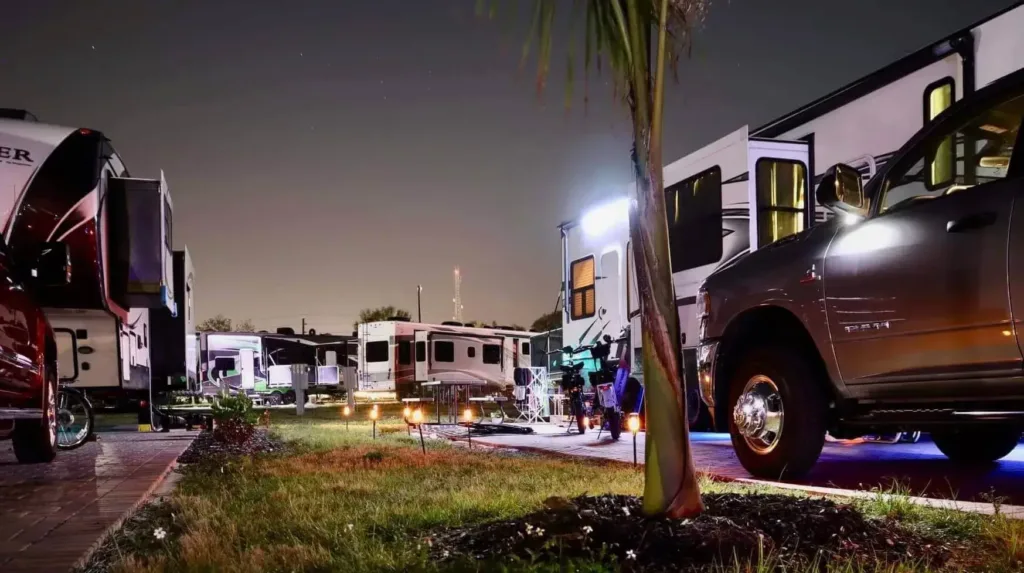
- RV Parks: Many cities have RV parks that allow overnight parking and sleeping in your RV. These parks typically offer amenities such as water and electric hookups, dump stations, and bathrooms. Some of them offer free parking.
- Walmart and other Superstores: As mentioned earlier, some Walmart stores allow overnight parking for RVs in their parking lots. However, it’s important to check with the store manager first and follow any posted rules or regulations. Other superstores, such as Cabela’s, Costco, and Home Depot may also offer overnight parking for Truck campers and other RVs
- Casinos: Some casinos offer free overnight parking for RVs in their parking lots. However, it’s important to check with the casino first and follow any posted rules or regulations.
- City and County Parks: Some city and county parks may allow overnight parking and sleeping in your RV. However, it’s important to check with the park first and follow any posted rules or regulations.
- Private Land: It may be possible to park and sleep in your RV on private land with the owner’s permission. This could include friends’ or family members’ properties, as well as commercial landowners who allow RVers to park for free or for a fee.
- Rest Areas: Many rest areas along highways and interstates allow overnight parking, but some have time limits or other restrictions. Check with the rest area’s signage or website for specific rules.
- Membership Programs: Membership programs like Harvest Hosts and Boondockers Welcome also offer unique opportunities to camp for free at wineries, farms, and other attractions. An annual Harvest Hosts membership allows you to park overnight for free at a variety of wineries, breweries, farms, museums, golf courses, and other attractions. They do require you to be self-contained with a portable toilet, so keep that in mind. Boondocker’s Welcome connects you with private property owners who welcome overnight campers.
When parking in urban areas, be mindful of local regulations and follow any posted signs. It’s also important to practice stealth camping and stay inside your vehicle during your stay. By taking advantage of these options, you can find a safe and comfortable place to rest for the night while on the road.
Leave No Trace Principle :
The Leave No Trace principles are a set of guidelines for minimizing human impact on the environment while enjoying the outdoors. Here are the seven principles:
- Plan ahead and prepare: Proper planning can prevent accidents and reduce impact on the environment. Know the regulations and special concerns for the area you’ll be visiting, and prepare accordingly.
- Travel and camp on durable surfaces: Stick to established trails and campsites whenever possible to avoid damaging fragile ecosystems.
- Dispose of waste properly: Pack out all trash, leftover food, and litter. Properly dispose of human waste by burying it in a cathole at least 6-8 inches deep and 200 feet away from water sources and campsites.
- Leave what you find: Leave natural and cultural features as you found them for others to enjoy.
- Minimize campfire impact: Use established fire rings or bring a portable stove to minimize impact on the environment. Always check fire restrictions in the area and follow proper fire safety practices.
- Respect wildlife: Observe wildlife from a distance and never feed them. Store food and trash in bear-resistant containers or hang it from a tree to prevent attracting animals to your campsite.
- Be considerate of other visitors: Respect other visitors and their experience by minimizing noise, following rules and regulations, and giving other groups plenty of space.
Precautions For Dispersed Camping:
When free camping, it’s important to take certain precautions to ensure your safety and minimize your impact on the environment. Here are some necessary precautions to consider:
- Research Your Campsite: Before setting up camp, research the area to make sure it’s legal and safe to camp there. Some areas may have specific regulations or restrictions on camping.
- Tell Someone Your Plans: Let someone know where you will be camping and when you plan to return. This can be a friend or family member, or you can leave a note in your vehicle.
- Bring Essential Gear: Bring the necessary gear to make your camping experience comfortable and safe. This may include a first-aid kit, appropriate clothing for the weather, a map and compass, and enough food and water.
- Practice Leave No Trace: Minimize your impact on the environment by practicing Leave No Trace principles. This includes properly disposing of waste, avoiding damaging plants and wildlife, and leaving your campsite as you found it.
- Be Aware of Wildlife: When camping in nature, it’s important to be aware of wildlife in the area. Keep a safe distance from animals, store your food in a bear-resistant container or hang it from a tree, and never approach or feed wildlife.
- Stay Safe: Always prioritize your safety when free camping. Avoid camping near water sources during flash flood season, be cautious of falling trees or branches, and make sure to have appropriate lighting and navigation tools in case of an emergency.
- Park Safe: Always prioritize your safety when free camping in an RV or Truck. Always park in well-lit areas, lock your doors, and be aware of your surroundings.
By taking these precautions, you can ensure a safe and enjoyable free camping experience while minimizing your impact on the environment. If you are panning dispersed camping in winter go through this article on “winter camping guide” for extra winter precautions.
Books On Free Camping You Must Have Along:
1. The RV Camping Bible 2023
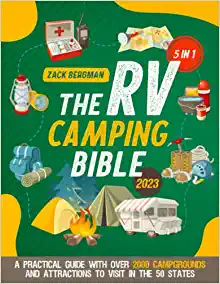
How to Make Life on the Road Easier, Safer, and Fun! A Practical Guide with Over 2000 Campgrounds & Attractions to Visit in the 50 States!
Get to know everything you need to know travelling with an RV in U.S. and around the world in just $24.41
2. Free Camping Directory For All 50 States
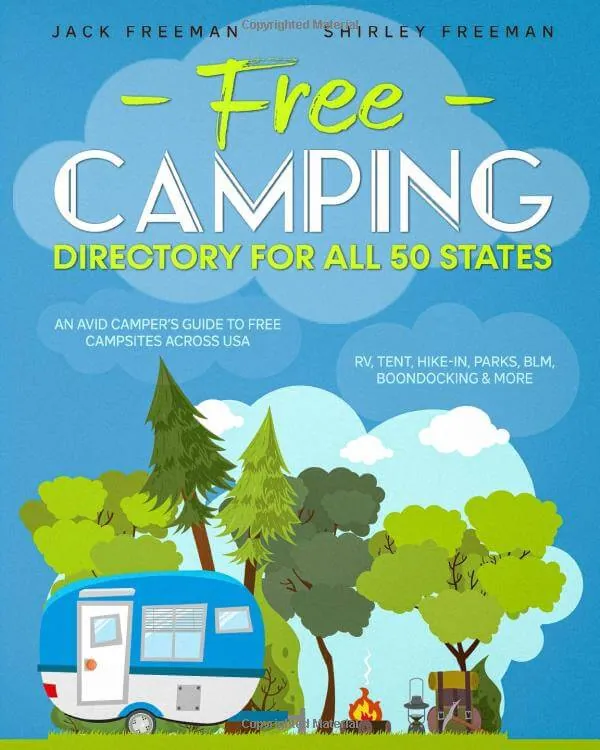
Free Camping Directory For all 50 States. The camp entries provide a list of “Key Factors” such as access, type of parking, security, time restrictions, lighting, availability of water, bathrooms, firepits and other amenities. A paragraph or two of narrative also provides tips on access, ambiance and good parking spots.
The authors have done all the research and legwork for you and as a bonus they have included fascinating little tidbits and interesting information about each place.
Dispersed Camping With Kids :
When it comes to dispersed camping with kids, there are a few things to keep in mind to ensure a safe and enjoyable experience. Here are some tips:

- Choose a family-friendly location: Look for a campground that is safe and suitable for families. Make sure there are nearby amenities such as water, restrooms, and trash receptacles.
- Pack accordingly: Make sure to pack all the necessary gear and equipment for your camping trip, including a first aid kit, insect repellent, sunblock, warm clothing, and plenty of food and water.
- Teach camping safety: Before heading out, teach your kids about camping safety, including how to identify and avoid potential hazards such as poison ivy, wild animals, and dangerous terrain.
- Keep a close eye on your kids: While you’re camping, keep a close eye on your children at all times. Make sure they stay within your sight, and teach them to always let you know where they’re going.
- Plan fun activities: Keep your kids entertained by planning fun activities such as hiking, fishing, and stargazing. Bring along some games and toys, too, for when you’re back at the campsite.
- Respect nature: Teach your children to respect nature by following Leave No Trace principles. Make sure they understand the importance of leaving the campsite clean and undisturbed.
- Be flexible: Remember that camping with kids can be unpredictable. Be prepared to change your plans if necessary and keep a positive attitude.
By following these tips, you can ensure a safe and enjoyable dispersed camping experience with your kids.
Free Camping Checklist :
At last, don’t forget to double check your your “Free Camping Checklist”. Here’s a free camping checklist that includes essential items to pack for a camping trip:
Shelter and Sleeping Gear:
- Tent
- Tent stakes and guylines
- Sleeping bag
- Sleeping pad
- Pillow
- Extra blankets (if needed)
- Repair kit for tent, sleeping pad, or sleeping bag
Cooking and Food Supplies:
- Stove
- Fuel
- Lighter or matches
- Cooking pots and pans
- Utensils (spatula, spoon, knife, fork, etc.)
- Plates and bowls
- Cups and mugs
- Cooler and ice (if needed)
- Food (including snacks and drinks)
- Water bottles or hydration system
- Water filtration system or purification tablets
Clothing and Personal Items:
- Weather-appropriate clothing (including rain gear and warm layers)
- Hat
- Sunglasses
- Gloves
- Hiking boots or shoes
- Extra socks
- Personal hygiene items (toilet paper, hand sanitizer, soap, toothbrush, etc.)
- Insect repellent
- Sunscreen
- Personal medications
- Headlamp or flashlight
- Extra batteries
- Maps and navigation tools
- Multitool or knife
- First aid kit
- Emergency whistle and signal mirror
- Emergency blanket or space blanket
Optional Items:
- Camp chairs
- Hammock
- Camp table
- Camp stove stand
- Lantern
- Portable solar charger or power bank
Remember to check the weather forecast and any local regulations or restrictions before heading out on your free camping trip. This list is a starting point and can be customized to fit your specific needs and preferences.
